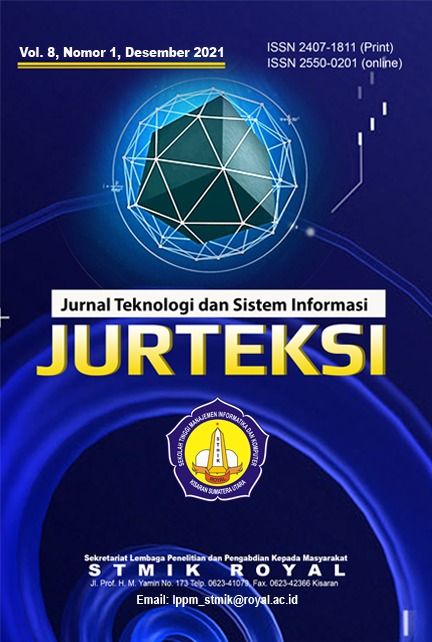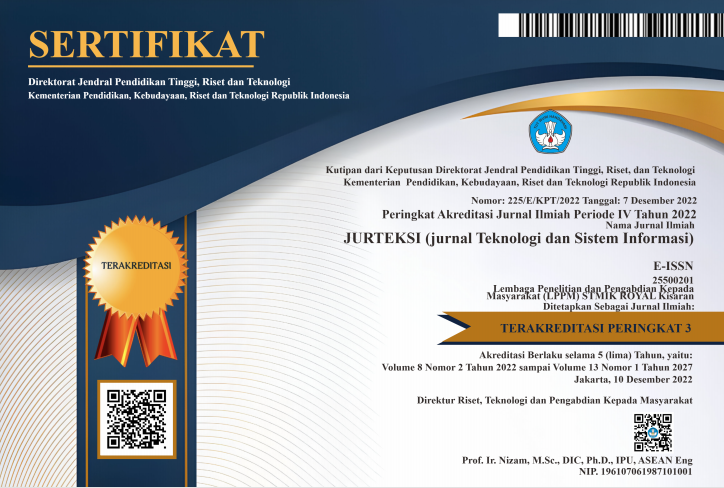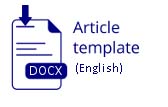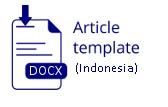AUDIT SYSTEM INFORMATION ELECTRONIC MEDICAL RECORD AS STUDENT ONLINE LEARNING
Abstract
Abstract: In the current digital era, almost all health care sectors require fast, precise, detailed, and valid services. The results of observations show that during lectures, students still have difficulty understanding the flow of input, process, and output of a good application, and do not know and have an idea about Application Software in Health Care Facilities that are already running in health facilities because some students do Field Work Practices. placed in health care facilities institutions still use manual systems with paper and recording in ledgers, during the current pandemic. In this study, an electronic medical record information system was designed and built as a student learning application regarding health service applications, system accuracy test using ISO 9126, where ISO 9126 looks at Functionability, Reliability, usability, efficiency, maintainability, and portability of a good system and provides recommendations if there are findings that the system does not meet the needs. The results of this study obtained the value of the Information System that was built only 75,92593 % which is the result of quality measurement so that this application does not fall into the category of the ISO 9126 standard because there are Portability Characteristics, namely Adaptability and Installability elements are not met, for these finding recommendations for improvements are given so that the system can run perfectly. according to the need for use.
Keywords: Covid-19, Electronic Medical Records, Learning Media, ISO 9126
Abstrak: Pada era digital sekarang, hampir semua sektor pelayanan kesehatan membutuhkan pelayanan yang cepat, tepat, detail, dan valid. Hasil observasi menunjukkan bahwa selama perkuliahan mahasiswa masih kesulitan memahami alur input, proses, dan output dari suatu aplikasi yang baik, serta belum mengetahui dan mempunyai gambaran tentang Software Aplikasi di Fasilitas Pelayanan Kesehatan yang sudah berjalan di fasilitas kesehatan dikarenakan beberapa mahasiswa yang melakukan Praktek Kerja Lapangan ditempatkan di institusi fasilitas pelayanan kesehatan masih menggunakan sistem manual dengan kertas dan pencatatan di buku. Pada penelitian ini dirancang dan dibangun sebuah sistem informasi rekam medis elektronik sebagai aplikasi pembelajaran mahasiswa mengenai aplikasi pelayanan kesehatan, uji akurasi sistem menggunakan ISO 9126, dimana ISO 9126 menilik Functionability, Reliability, usability, efesiency, maintainability dan portability sistem yang baik serta memberi rekomendasi apabila ada temuan sistem yang belum sesuai kebutuhan. Hasil dari penelitian ini diperoleh nilai Sistem Informasi yang dibangun hanya 75,92593 % yang merupakan hasil pengukuran kualitas sehingga aplikasi ini tidak masuk kategori standar ISO 9126 karena ada Karakteristik Portability yaitu unsur Adaptability, dan Installability tidak terpenuhi, untuk temuan ini diberikan rekomendasi perbaikan agar sistem dapat berjalan sempurna sesuai kebutuhan penggunaannya.
Kata kunci: Covid-19, Media Pembelajaran, Rekam Medis Elektronik, ISO 9126
References
G. Zhou, S. Chen, and Z. Chen, “Back to the spring of 2020: facts and hope of COVID-19 outbreak,†Front. Med., vol. 14, no. 2, pp. 113–116, 2020.
P. Sahu, “Closure of Universities Due to Coronavirus Disease 2019 (COVID-19): Impact on Education and Mental Health of Students and Academic Staff,†Cureus, vol. 2019, no. 4, pp. 4–9, 2020.
E. J. Sintema, “Effect of COVID-19 on the performance of grade 12 students: Implications for STEM education,†Eurasia J. Math. Sci. Technol. Educ., vol. 16, no. 7, pp. 1–6, 2020.
S. Gupta and M. K. Jawanda, “The impacts of COVID-19 on children,†Acta Paediatr. Int. J. Paediatr., 2020.
M. I. Mustofa, M. Chodzirin, L. Sayekti, and R. Fauzan, “Formulasi Model Perkuliahan Daring Sebagai Upaya Menekan Disparitas Kualitas Perguruan Tinggi,†Walisongo J. Inf. Technol., vol. 1, no. 2, p. 151, 2019.
B. Alessandro, “Digital skills and competence, and digital and online learning,†TurinEuropean Train. Found., p. 72, 2018.
M. N. G. J. Y. Tika Purnamasari, “Analisis Minat Belajar Mahasiswa Pada Masa Perkuliahan Online Menggunakan Rougt Set,†vol. VII, no. 3, pp. 251–258, 2021.
J. Crews and J. Parker, “The Cambodian experience: exploring university students’ perspectives for online learning,†Issues Educ. Res., vol. 27, no. 4, pp. 697–719, 2017.
J. Lee and L. Martin, “Investigating students’ perceptions of motivating factors of online class discussions,†Int. Rev. Res. Open Distance Learn., vol. 18, no. 5, pp. 148–172, 2017.
R. Ahmed, “Effects of online education on encoding and decoding process of students and teachers,†MCCSIS 2018 - Multi Conf. Comput. Sci. Inf. Syst. Proc. Int. Conf. e-Learning 2018, vol. 2018-July, pp. 42–48, 2018.
O. A. Pilkington, “Active Learning for an Online Composition Classroom: Blogging As an Enhancement of Online Curriculum,†J. Educ. Technol. Syst., vol. 47, no. 2, pp. 213–226, 2018.
M. Nakayama, K. Mutsuura, and H. Yamamoto, “Impact of learner’s characteristics and learning behaviour on learning performance during a fully online course,†Electron. J. e-Learning, vol. 12, no. 4, pp. 394–408, 2014.
E. Susanto and Sugiharto, Manajemen Informasi Kesehatan IV: Etika Profesi dan Hukum Kesehatan. 2017.
L. S. Helling, E. Wahyudi, and H. Hasanudin, “Siremis: Sistem Informasi Rekam Medis Puskesmas Kecamatan Matraman Jakarta,†INTENSIF J. Ilm. Penelit. dan Penerapan Teknol. Sist. Inf., vol. 3, no. 2, p. 116, 2019.
D. Mining, “Pengujian Usabilitas Berdasarkan Panduan Iso 9126 Untuk Aplikasi E-Commerce,†עלון ×”× ×•×˜×¢, vol. 66, pp. 37–39, 2012.
A. Abran, R. E. Al-Qutaish, J.-M. Desharnais, and N. Habra, “ISO-Based Models to Measure Software Product Quality,†Softw. Qual. Meas. - Concepts Approaches, pp. 61–96, 2008.













